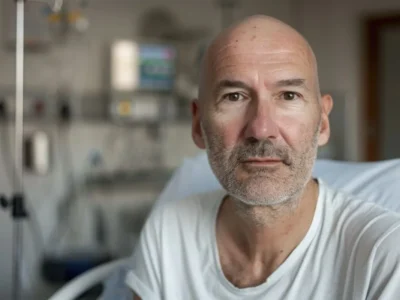Occupational therapists as members of transdisciplinary socio-health teams have direct contact with people with all kinds of disabilities, dependency or functional limitations and/or in their social participation, therefore, the application of OT treatments has a direct impact on health, personal autonomy and people’s quality of life.
Occupational therapy occupies a privileged position within the rehabilitation process since by addressing the activities of daily living (ADL) it necessarily must coordinate physical, cognitive, emotional and behavioral aspects to achieve the patient’s maximum level of functionality (1).
Occupational therapy is regulated by various laws and regulations. The Law on the Regulation of Health Professions includes in its article 7 the figure of the occupational therapist as: “Occupational Therapists: it is the responsibility of University Diplomates in Occupational Therapy to apply techniques and to carry out activities of an occupational nature that tend to enhance or replace diminished or lost physical or psychic functions, and to guide and stimulate the development of such functions” (2). On the other hand, if we take as a reference the consensus definitions in our European environment such as those of the ENOTHE terminology working group (3) the concept of “occupational activities” is defined as: “a group of activities that have personal and sociocultural meaning that are determined by culture and promote participation in society. Occupations can be classified as self-care, productivity and/or leisure and free time”. For an activity to be understood as therapeutic it must meet a series of characteristics, among others:
Characteristics of occupational therapy
- Be directed toward an objective.
- Have a useful meaning for the user.
- Be a tool suitable for the prevention of dysfunction, the maintenance or improvement of function, dexterity and quality of life.
- Stimulate the user’s participation in activities of daily living.
- Be determined by the professional judgment of the occupational therapist, who will base this on their knowledge of the pathology in question, specific indications, interpersonal relationships and the specific value of the indicated activity.
Taking into account the above aspects occupational therapy can be defined as the set of techniques, methods and actions that, through activities applied for therapeutic purposes, prevent and maintain health, promote the restoration of function, compensate for disabling deficits and assess behavioral responses and their meaning to achieve the greatest independence in activities of daily living, both basic and instrumental, and the possible reintegration of the individual, in their physical, psychic, cognitive, emotional, social and work-related aspects.
On the other hand occupational therapy is defined by the American Occupational Therapy Association (4) in 1968 as “The art and science of directing a person’s response to selected activity to promote and maintain health, to prevent disability, to evaluate behavior and to treat or train patients with physical or psychosocial dysfunctions.”
Objectives and functions of occupational therapy
The generic objectives pursued in the practice of occupational therapy are:
- the prevention of disability,
- the promotion of health (COTEC, 2012)
- and the achievement of maximum or optimal levels of functioning in those individuals whose functioning is altered or limited by an injury, physical or mental illness, a condition of dysfunction, a developmental or learning alteration or adverse contextual conditions.
Occupational therapy includes four major concepts (5) that define it as a profession and define the overall objectives of its intervention:
- Occupational therapy is a healthcare profession that uses activity selected to prevent and treat any physical, emotional or social disability at any age group. Its fundamental objective is to promote, maintain and/or restore functional independence in the skills of activities of daily living.
- The main objective of occupational therapy is human occupation and its importance for health status for people of any age. It evaluates the physical, psychosocial and environmental factors that negatively influence people’s ability to participate in everyday activities that are part of occupation.
- The therapeutic objectives are achieved through techniques or activities designed to:
- Control and attenuate pathology.
- Restore and/or reinforce functional capacity.
- Facilitate the learning of skills and functions essential for adaptation to the environment (physical, family, social, work, etc.).
- Promote and maintain health.
- Occupational therapy is a healthcare profession that teaches, educates, maintains and promotes competent behaviors in activities of daily living, learning and working for individuals who experience illnesses, developmental deficits and/or physical and psychosocial dysfunctions or for those who are at risk of experiencing them.
Promotion of health and well-being
Occupational therapy is a profession based on the promotion of health and well-being through activity-occupation, as a fundamental axiom, whose main objective is to enable people to participate in activities of daily living. For this, occupational therapists have extensive training in the knowledge of human skills, abilities and capacities related to participation in various activities and contexts, as well as the interaction that occurs between these elements in situations of health and in the absence of it, which can influence both their bodily structures and their capacity to experience participation difficulties.
From all of the above the specific roles of the occupational therapist in physical medicine and rehabilitation services are established: training and re-education of basic and instrumental activities of daily living, the use of activities for the recovery, adaptation or rehabilitation of any alteration in the different body systems (cognitive-perceptual, musculoskeletal, sensorimotor, behavioral, among others), the design, manufacture and training for the use of assistive products (adaptation and training of positioning systems and wheelchairs, for example), and the assessment, recommendation and treatment regarding ergonomics guidelines and adaptation of the physical and sensory environment (architectural barriers, or workplace adaptation, for example).
Prevention of impairment
Occupational therapists are qualified to participate in the prevention of impairment, activity limitations and participation restrictions through enabling the person to achieve their goals (5).
More concretely we can define the following objectives or aims of occupational therapy.
Prevent disabilities:
Avoid imbalances in the areas of activities of daily living; prevent dysfunctions in these areas; anticipate possible injuries and pathologies in the components involved in performing everyday activities; participate in the community in projects and actions aimed at preventing disability.
Evaluate the components of execution and performance of activities of daily living in a general and specific way:
Carry out functional assessments, both of range of motion and muscle strength; evaluate functional limitations; analyze everyday gestures; determine sensory, perceptual, cognitive and behavioral capacities related to activities of daily living; determine social capacities; assess the everyday and work environment.
Maintain, acquire, improve or recover the components of activities of daily living:
Increase mobility and muscle strength, improve coordination, increase and improve dexterity, raise the fatigue threshold by increasing effort tolerance, teach compensations for lost or impaired functions, guidelines for joint economy and energy conservation, develop residual capacities, determine residual capacities, training, adaptation and fabrication for the use of prostheses and orthoses, improve-achieve adherence to treatment, demonstrate to the patient their possibilities for improvement and functional independence, maximize their independence in activities of daily living, training and fabrication of assistive products both for basic and instrumental activities of daily living, as well as in the use of hoists and wheelchairs, reorient and adapt the work environment, eliminate-adapt potential architectural barriers, help the patient live with their disability by providing a realistic and optimistic view of their new situation as well as recommending and advising them about their interests and occupations.
In summary, to maximize functional abilities, develop residual capacities, compensate for irrecoverable functional deficits and achieve the reintegration of the patient into society, living with their disability, but with the greatest possible degree of independence.
Bibliography
1. Sánchez Cabeza, A. What is a neurological occupational therapist and how can they help you? In: Guide to Neurooccupational Therapy. Ediciones SEN. Madrid. 2016.
2. Boletín Oficial del Estado. 21340 Law 44/2003, of November 21, on the regulation of health professions;2003.
3. European Network Occupational Therapy in Higher Education. European Occupational Therapy Terminology Database. (database on the Internet). (accessed September 7, 2009). Available at: http://pedit.hio.no/-brian/enothe/terminolgy/
4. American Occupational Therapy Association: Summary report: 1990 member data survey, Rockville MD, AOTA, 1990.
5. World Federation of Occupational Therapy. Definitions of Occupational Therapy. Draft 7-August ,2005.
6. Summary of the occupational therapy profession in Europe 2012. Council of Occupational Therapists for the European Countries (COTEC). Update 06/06/2012. Available at: www.baot.org.uk.
“This article has been translated. Link to the original article in Spanish:”
Terapia ocupacional: características, objetivos y funciones







 Crossed Laterality and Learning Difficulties: Activities to Work on Laterality
Crossed Laterality and Learning Difficulties: Activities to Work on Laterality
Leave a Reply